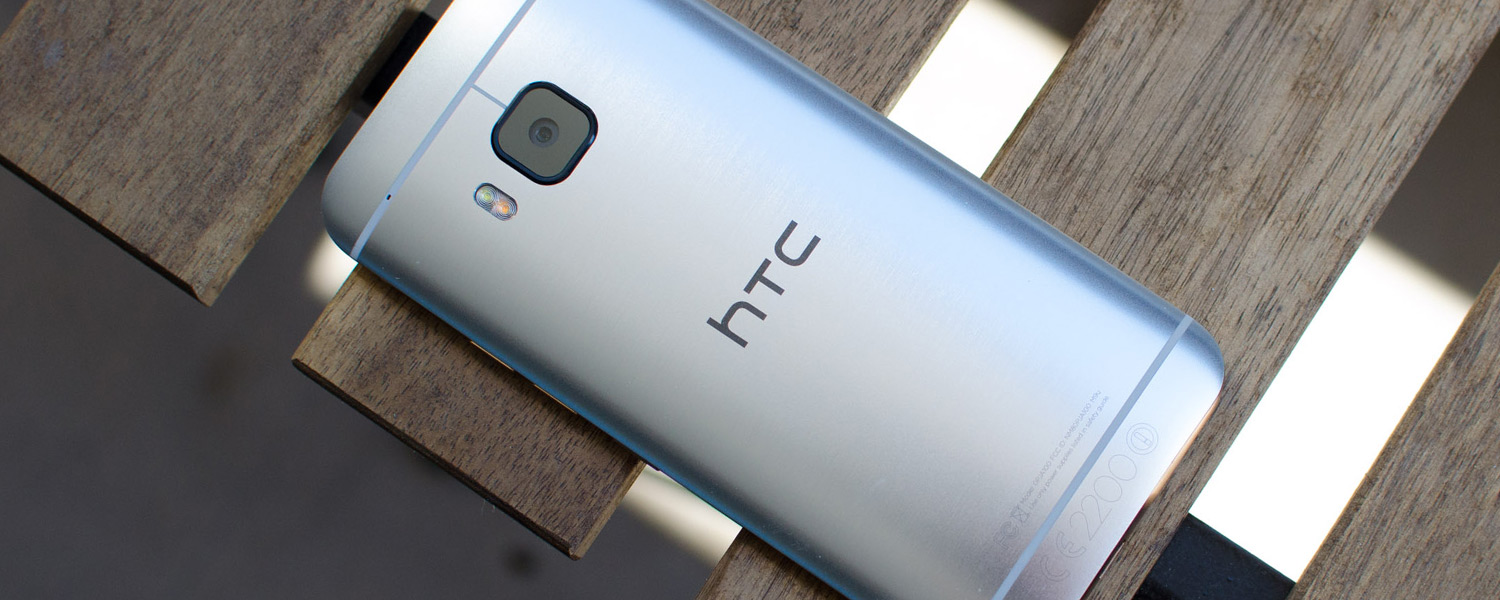Battery Life
Inside the HTC One M9 is a non-removable lithium-ion battery with a capacity of 10.8 Wh (2,840 mAh, 3.8 V), which is a 10% increase in size compared to the One M8. I suspect this is to compensate for the extra power the Snapdragon 810 can consume at peak, as the display size remains the same for both smartphones.
The Snapdragon 810 is the first SoC from Qualcomm to be produced on a 20nm HPm node, which is a more efficient node than 28nm, used for the company's previous flagship chips. The increased performance of the 810 will negate some of the gains from the node shift, though we should still see lower power consumption in low intensity tasks including standby, as well as when using non-performance SoC blocks such as the media codec and wireless radios.
The specifications suggest that the battery life of the One M9 should be similar to that of the One M8, and in my day to day usage this seemed to be true. Battery life was good without being astonishing: on one particularly intensive day, using the phone reasonably frequently on LTE networks, it lasted until I got home in the late evening with a small percentage of charge remaining. The best phones out there would leave me with a bit more headroom, though I never felt the One M9 had inadequate battery life.
Let's see how the One M9 performs in our battery benchmarks.
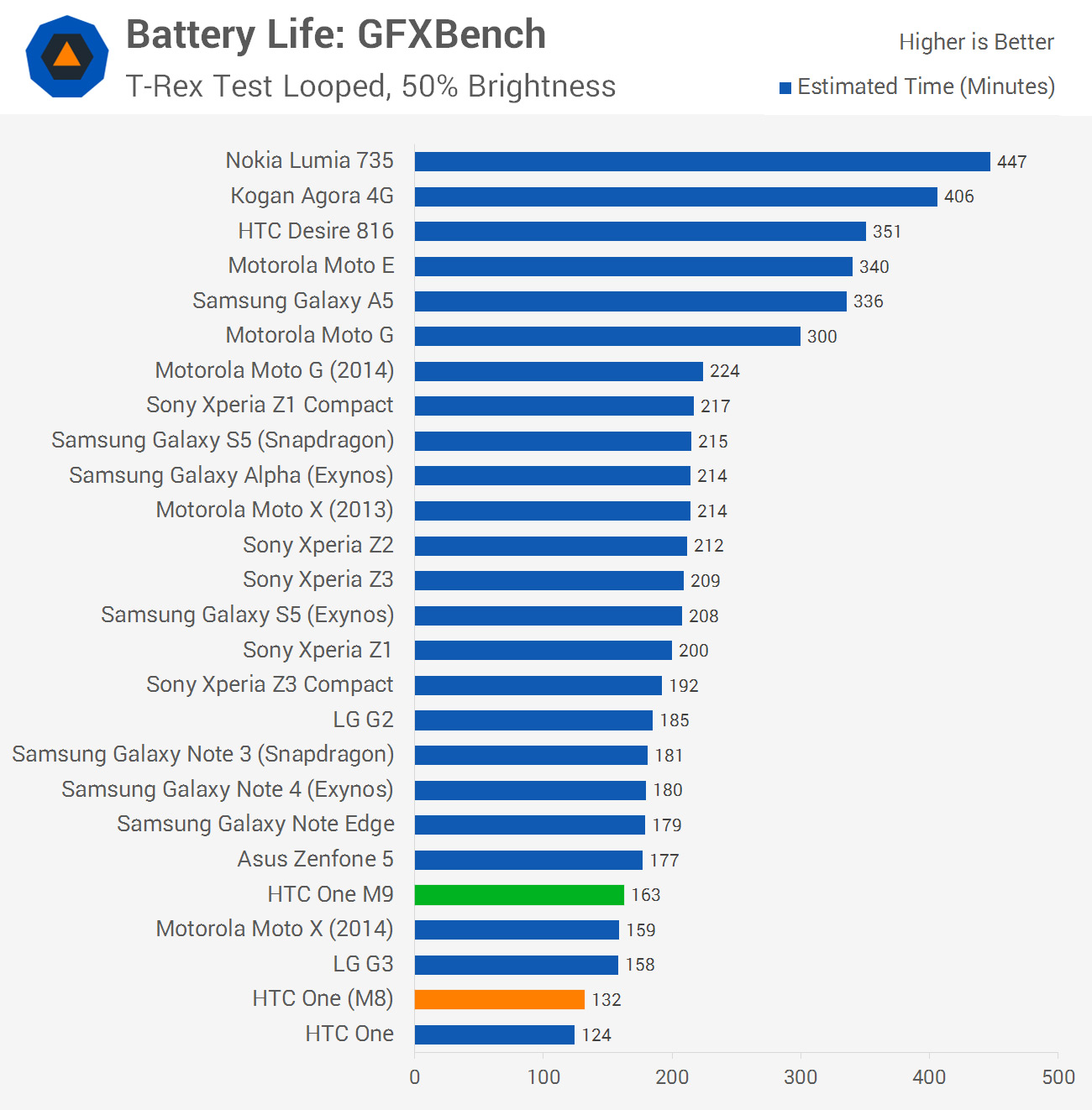
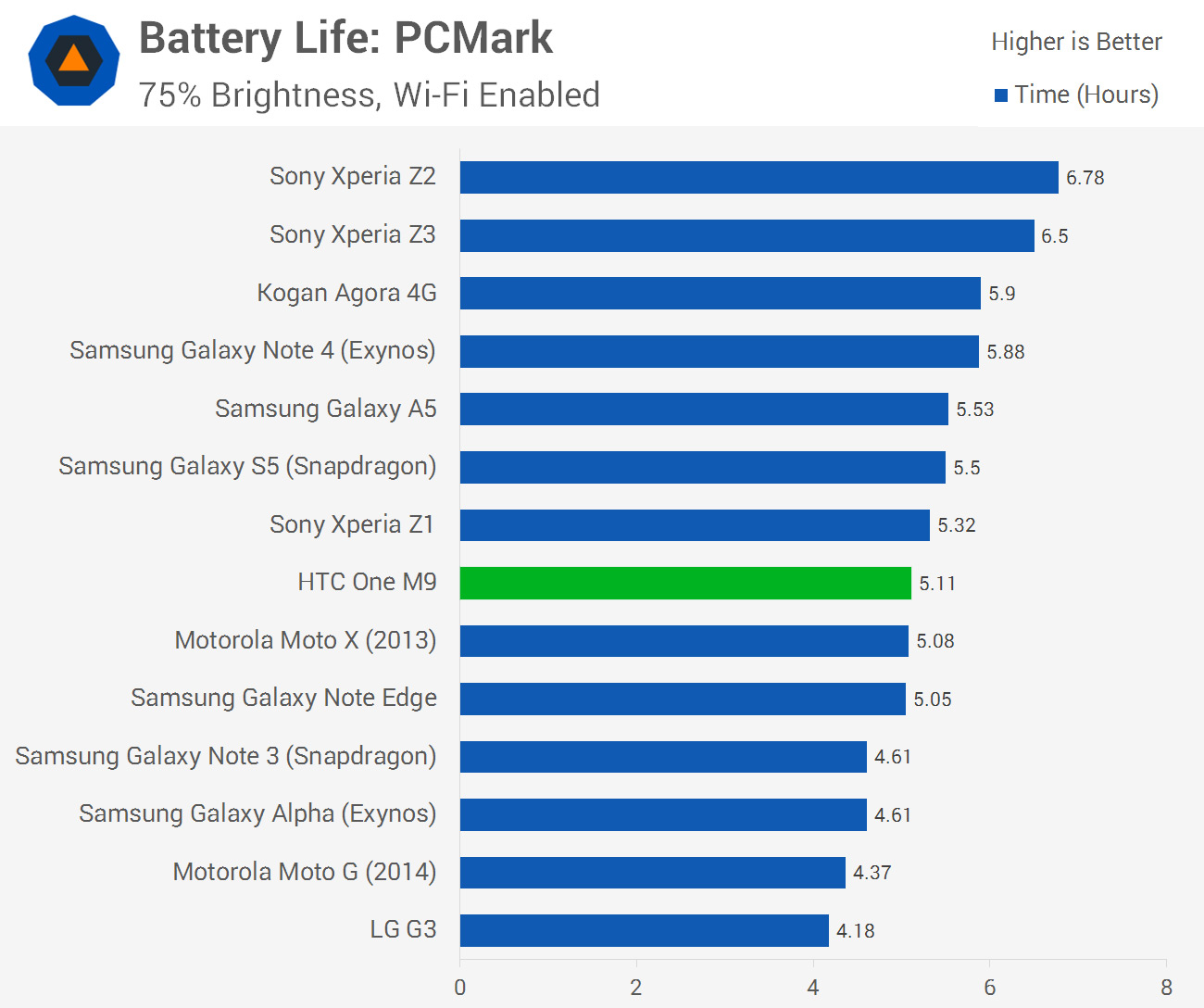
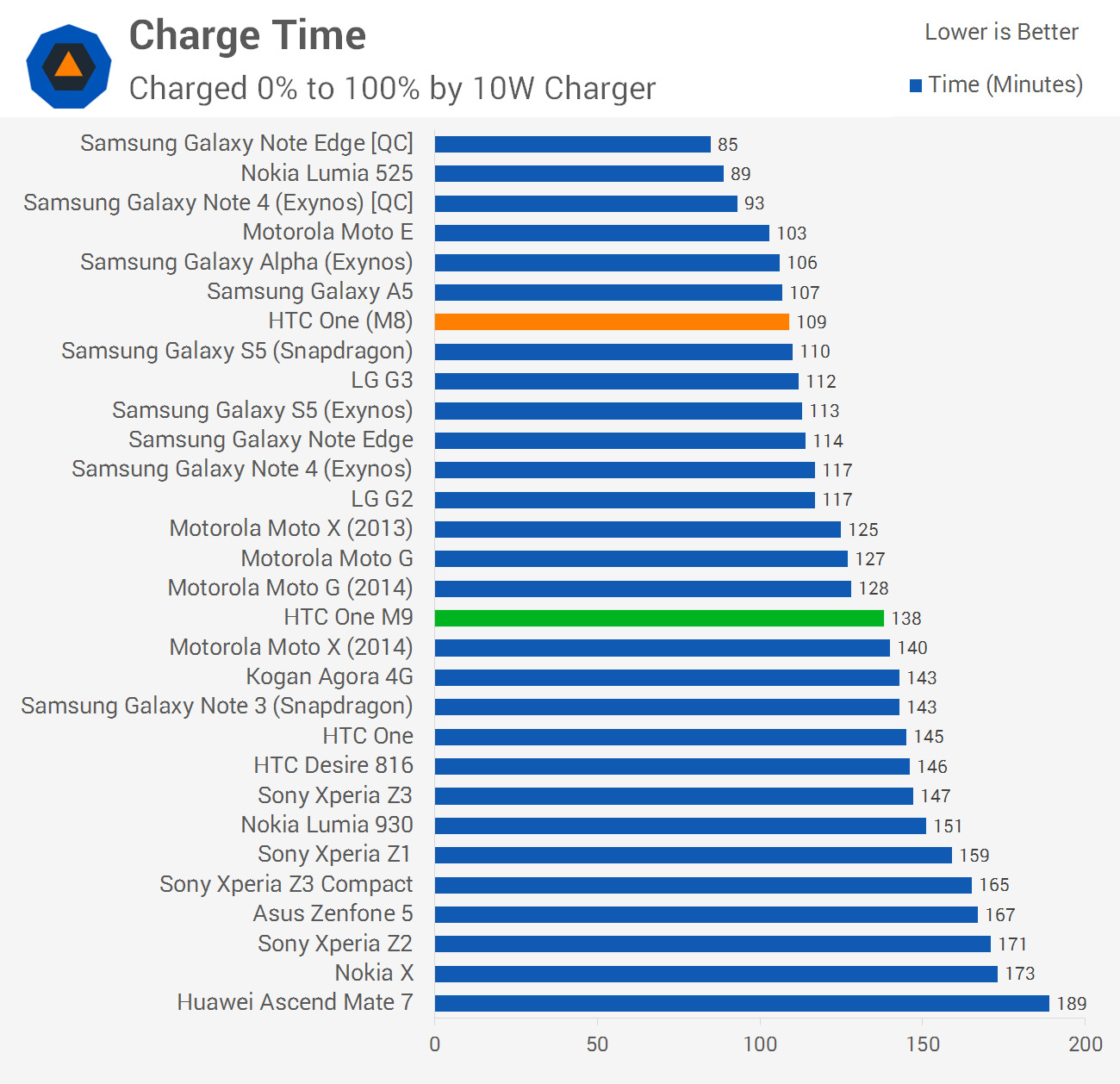
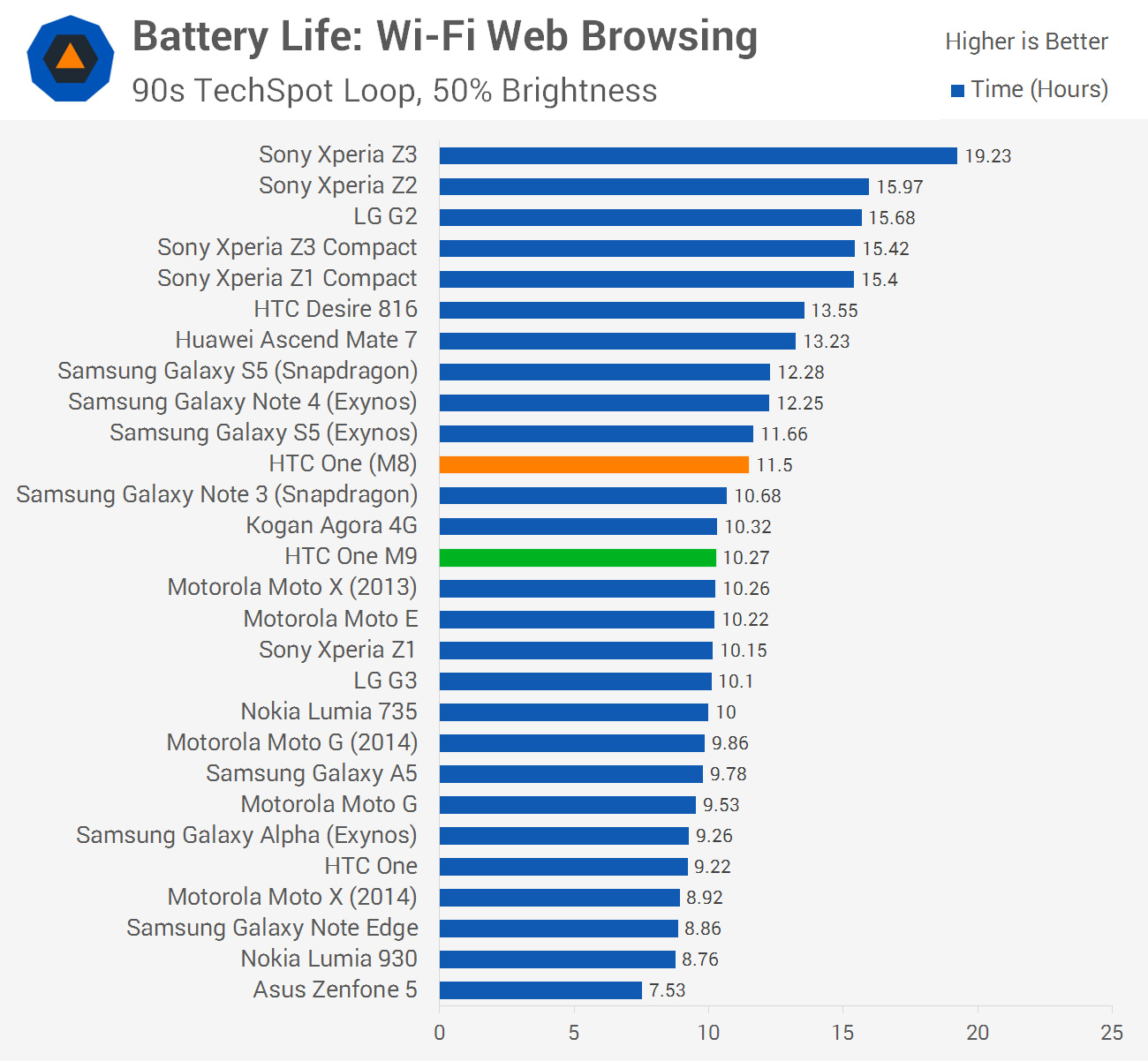
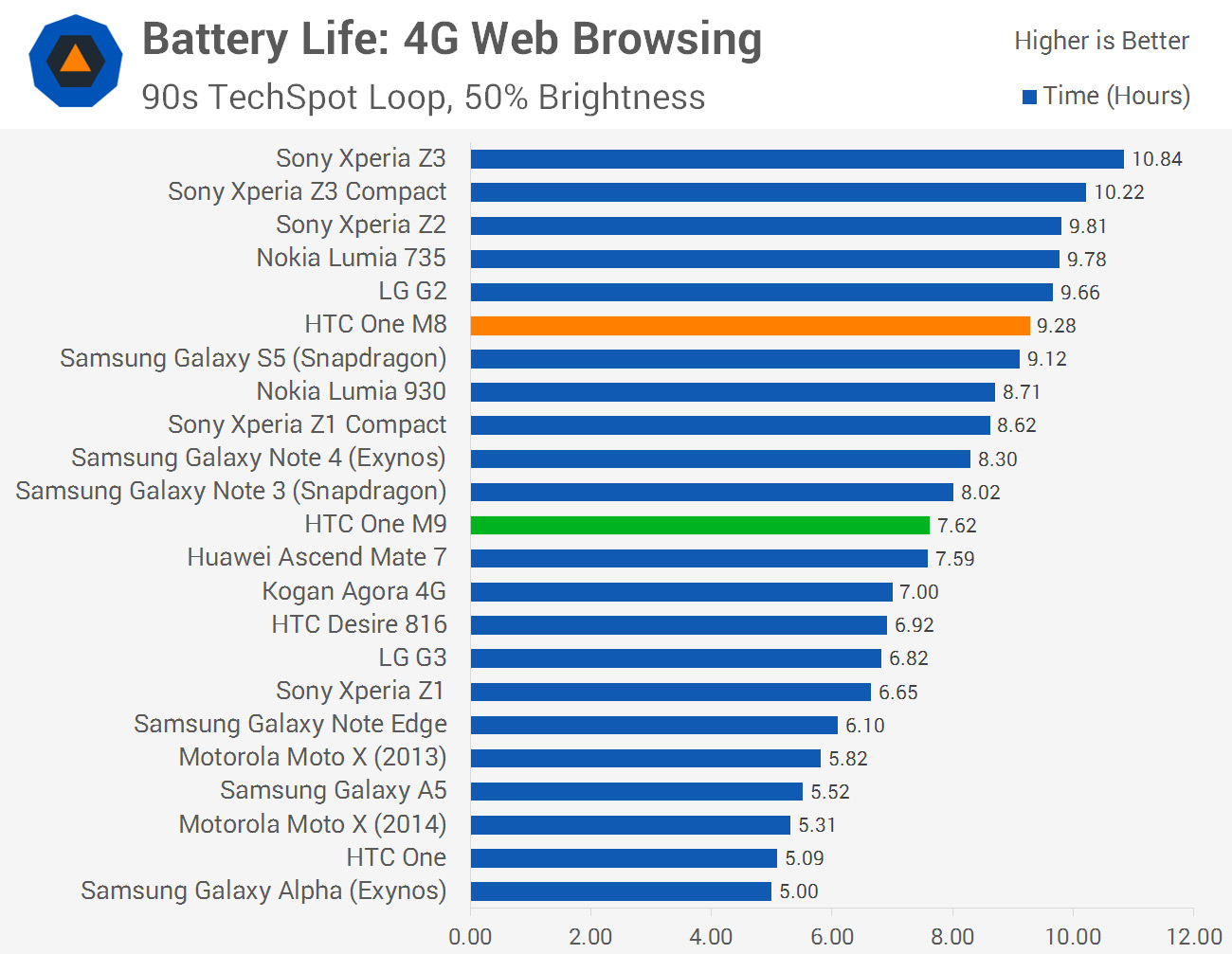
As you can see from the tests we've run above, battery life from the One M9 falls in the middle of most of our graphs, often exhibiting stamina worse than the One M8. To be honest this is pretty disappointing from HTC, and while the phone's battery life is far from terrible in general, I never like seeing a reduction in performance going from one generation to the next.
